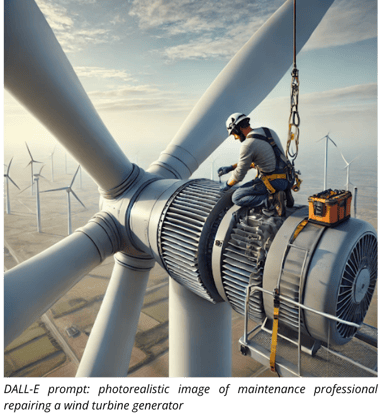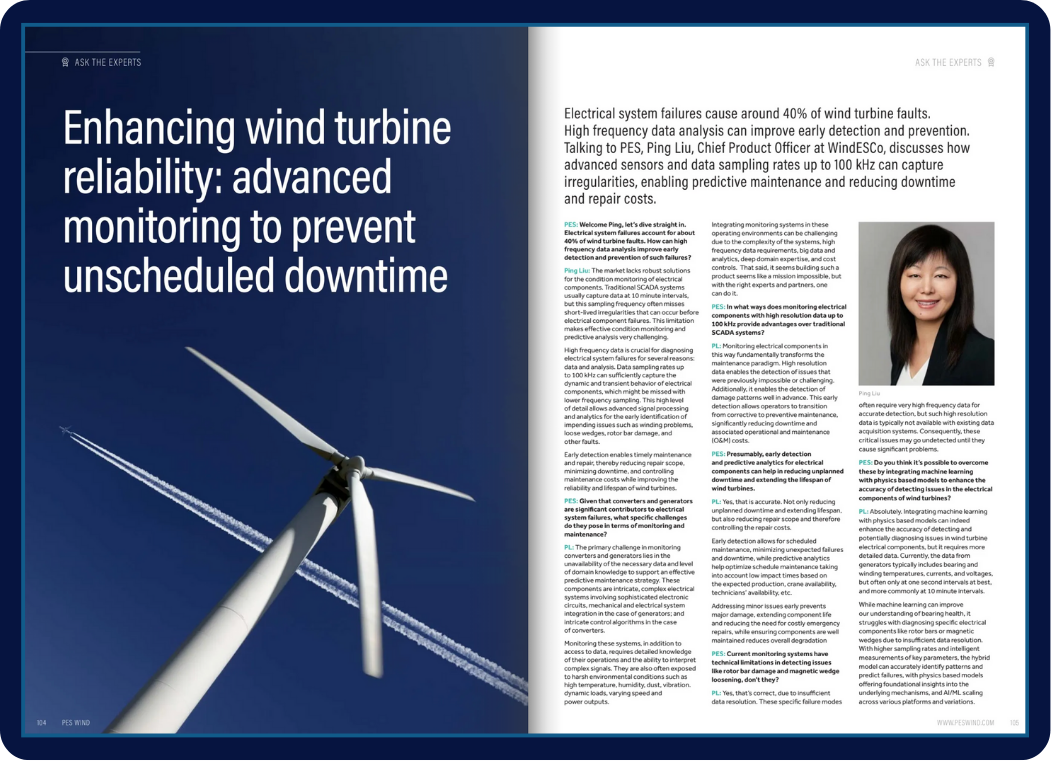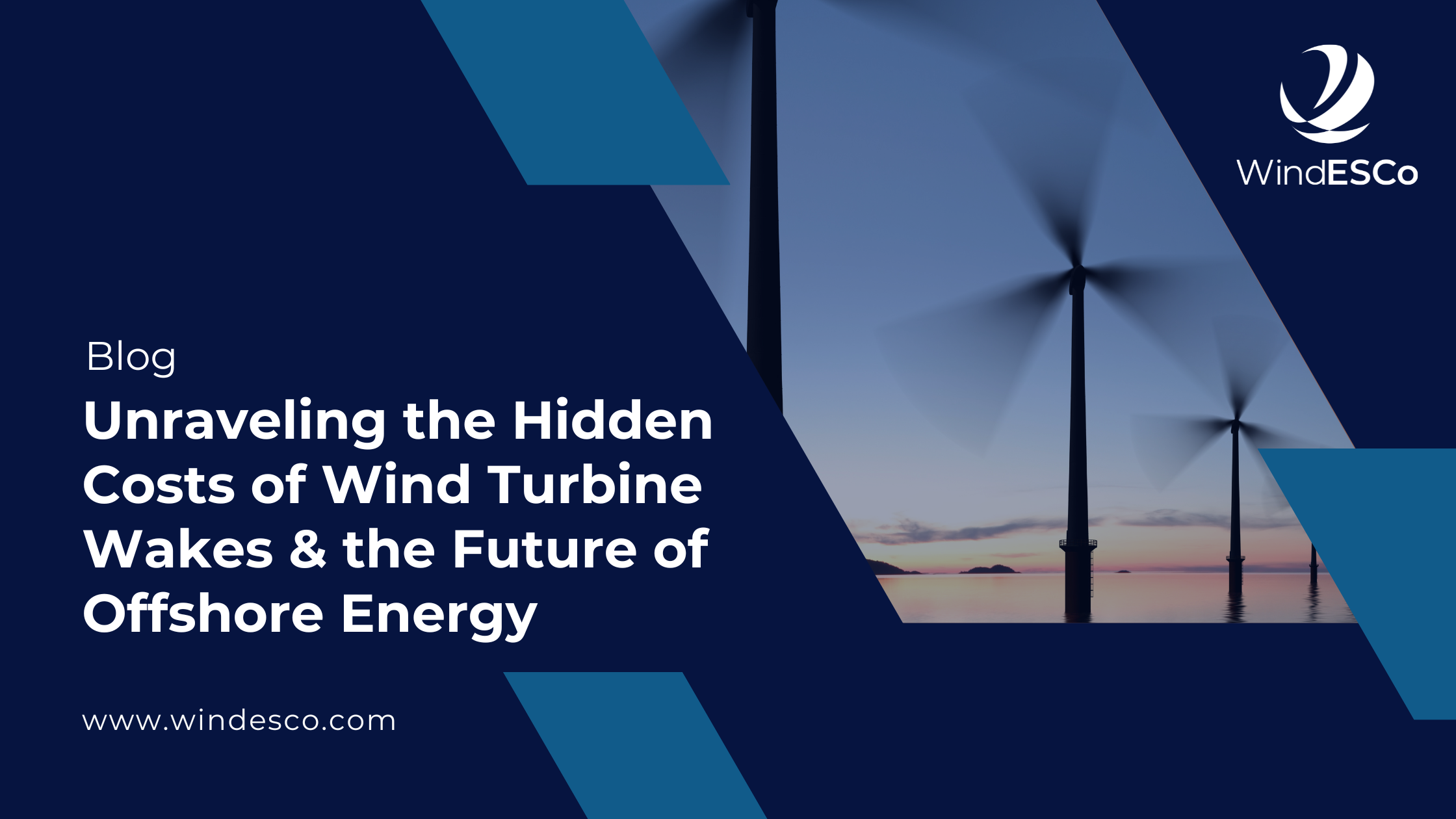Enhancing Wind Turbine Reliability: Advanced Monitoring to Prevent Unscheduled Downtime
In a recent "Ask the Experts" interview with PES Wind (Issue 3, 2024), our Chief Technology Officer, Ping Liu, discusses how advanced sensors and...
4 min read
WindESCo Oct 1, 2024 10:45:35 AM

 On September 25, 2024, WindESCo's Senior Technical Lead in EMEA, Zuri Zugasti, shared fascinating insights at the WindEnergy Hamburg conference, focusing on how WindESCo is revolutionizing asset health monitoring in the wind energy sector through artificial intelligence. As the industry evolves, so too do the strategies to optimize turbine performance and reduce operational costs. In this blog, we’ll explore the journey of our innovative solutions, the pivotal role AI plays in enhancing energy production, and real-world applications that are reshaping the future of wind energy management.
On September 25, 2024, WindESCo's Senior Technical Lead in EMEA, Zuri Zugasti, shared fascinating insights at the WindEnergy Hamburg conference, focusing on how WindESCo is revolutionizing asset health monitoring in the wind energy sector through artificial intelligence. As the industry evolves, so too do the strategies to optimize turbine performance and reduce operational costs. In this blog, we’ll explore the journey of our innovative solutions, the pivotal role AI plays in enhancing energy production, and real-world applications that are reshaping the future of wind energy management.
WindESCo monitors asset health and optimizes performance of wind plants. Our solution combines artificial intelligence and machine learning with deep domain expertise to increase energy production, increase uptime, reduce O&M costs, and increase productivity.
Historically, WindESCo's primary focus was on increasing Annual Energy Production (AEP) by fine-tuning turbine operations and reducing energy losses due to malfunctions. Issues like chronic underperformance and static yaw misalignment were early targets. But as the wind energy industry evolved, so did our approach. Recognizing the growing demand for comprehensive asset health monitoring, we expanded our platform to cover both mechanical and electrical components.
Additionally, our customers expressed a need for efficient custom reporting. So, we enhanced our platform to reduce the time spent generating these reports while improving their accuracy. Our new data explorer allows customers to easily visualize and analyze their data, empowering them to conduct self-analysis. Meanwhile, our workflow management tool streamlines issue tracking, eliminating the need for manual record-keeping.
To understand the importance of AI in wind energy, let's take a step back to the early 1950s. Alan Turing, a brilliant British mathematician, asked a question that still resonates today: can machines think? Turing's Imitation Game - what we now call the Turing Test - challenged the world to imagine a future where machines could mimic human intelligence. His revolutionary ideas laid the groundwork for modern AI, pushing us to contemplate machines that could behave, communicate, and even think like humans.
Since then, the journey of AI has been marked by alternating periods of excitement and disappointment - what we call "AI winters." Early rule-based algorithms couldn't meet lofty expectations, but the rise of the internet, increased computing power, and access to vast datasets ushered in a new era of AI applications.
Today, AI is deeply embedded in our daily lives. From unlocking our phones with facial recognition to GPS systems that dynamically reroute us around accidents and traffic jams, AI is everywhere. But what does this mean for industries like wind energy?
AI has already made significant leaps in various fields. In 1997, chess grandmaster Garry Kasparov lost to IBM's supercomputer, Deep Blue, marking a pivotal moment in AI's capability to outthink humans in complex games. Kasparov remarked, "The machine refused to move to a position that had a decisive short-term advantage - showing a very human sense of danger."
A similar leap happened in 2016 when Google's DeepMind defeated Go champion Lee Sedol. Unlike previous AI systems that relied on massive datasets of expert games, DeepMind's AlphaGo mastered the game by playing against itself, learning through trial and error - a major advancement in unsupervised learning.
Even more recently, OpenAI developed a robotic hand that could solve a Rubik's Cube through an AI-driven process of trial and error. While this breakthrough required massive computational power, it showcased AI's capacity for tackling physical tasks - a promising development for industries like wind energy.
 AI in Wind Energy: What's Next?
AI in Wind Energy: What's Next?So, how does AI play a role in wind energy today? According to AI models like ChatGPT, AI has broad applications, including predictive maintenance, performance optimization, fault detection, and wind farm control. At WindESCo, our AI-driven solutions focus on these key areas:
Traditional anomaly detection in wind turbines often involves expensive and time-consuming methods like grease sampling and vibration monitoring. These approaches, while effective, can be costly and difficult to scale. Instead, WindESCo leverages existing SCADA and operational data for online monitoring, which is more scalable and cost-effective for predicting component replacement needs without additional hardware.
Typical anomaly detection approaches include various testing techniques and monitoring systems, each with its advantages and limitations. Non-destructive testing methods, such as grease sampling, can be costly and challenging to scale. Vibration monitoring systems offer real-time alerts for potential failures but may come with high expenses and reliability issues, particularly in predicting the remaining lifespan after a problem is detected. In contrast, leveraging existing data sources for online monitoring proves to be a more economical, scalable, and reliable solution for predicting replacement times without the need for additional instrumentation.
 WindESCo's approach focuses on optimizing what you already have - maximizing the effectiveness of existing data to achieve high precision and recall in anomaly detection. By aggregating contextualized, high-quality data, they employ advanced AI and machine learning alongside physics-based modeling for in-depth analysis. This enables them to prioritize alerts for asset managers regarding asset status and to provide tailored advice and action plans to enhance operational efficiency and decision-making.
WindESCo's approach focuses on optimizing what you already have - maximizing the effectiveness of existing data to achieve high precision and recall in anomaly detection. By aggregating contextualized, high-quality data, they employ advanced AI and machine learning alongside physics-based modeling for in-depth analysis. This enables them to prioritize alerts for asset managers regarding asset status and to provide tailored advice and action plans to enhance operational efficiency and decision-making.
The data preparation phase is crucial for the success of any machine learning project. At this stage, it's essential to ensure that the data accurately represents the period and conditions we want to analyze. This means checking both the quantity and the quality of the data to ensure the distribution covers a broad range of ambient and operational conditions.
But is machine learning really necessary for detecting main bearing damage? WindESCo conducted a comparison between the traditional, statistics-based method - which compares main bearing temperatures across neighboring turbines - and the machine learning approach. In a study involving 81 turbines, 18 of which experienced known main bearing failures, the statistics-based approach achieved only a 30-40% detection rate. In contrast, the machine learning method exceeded a 90% detection rate.
The benefits of implementing a machine learning detection system are significant: reduced crane costs, lower component replacement costs, and increased turbine uptime, resulting in an estimated annual savings of $492,000 for the customer.
Artificial intelligence has become an integral part of our everyday lives, influencing a wide array of industries, including the wind energy sector. While AI offers significant potential, it is important to recognize that it is not a comprehensive end-to-end solution - domain expertise plays a crucial role at nearly every stage of implementation. WindESCo exemplifies this synergy by leveraging AI for performance optimization and health condition monitoring in wind turbines. In our latest case study, we demonstrate the effective use of existing 10-minute SCADA and other operational data to detect impending issues with main bearings, achieving an impressive accuracy rate exceeding 90%. This approach not only highlights the power of data-driven insights but also underscores the necessity of combining advanced technology with expert knowledge to enhance reliability and operational efficiency in wind energy systems.

In a recent "Ask the Experts" interview with PES Wind (Issue 3, 2024), our Chief Technology Officer, Ping Liu, discusses how advanced sensors and...

1 min read
The past 10 years have been the warmest recorded temperatures on earth. Dangerous heatwaves, floods and wildfires are more frequent than ever...

1 min read
As the push for renewable energy accelerates, offshore wind farms have emerged as pivotal players in the quest for sustainable power. However, a...